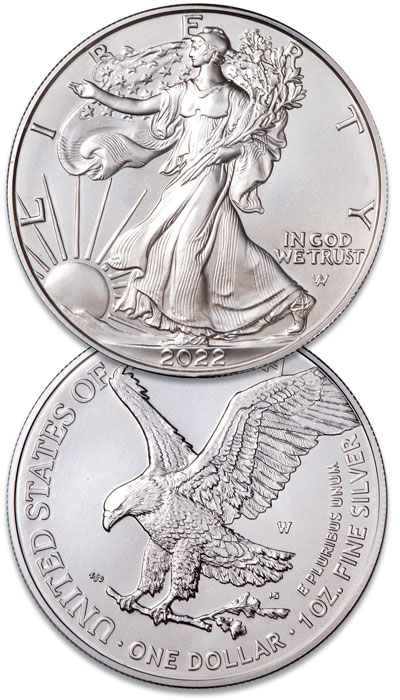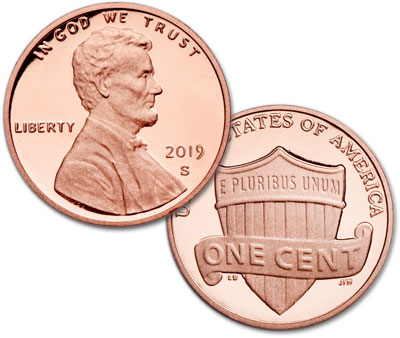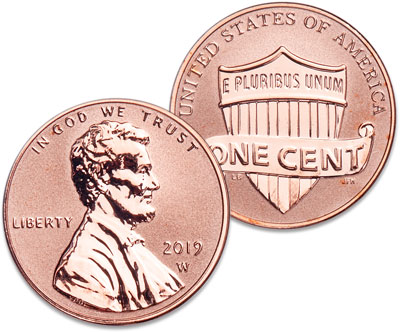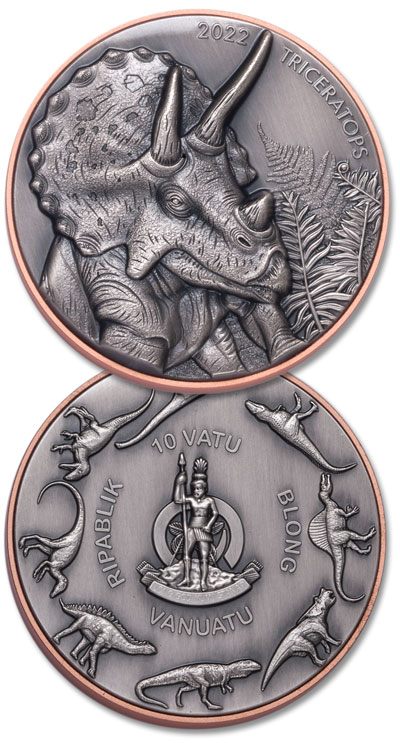Types of Coin Finishes
How many do you have in your collection?
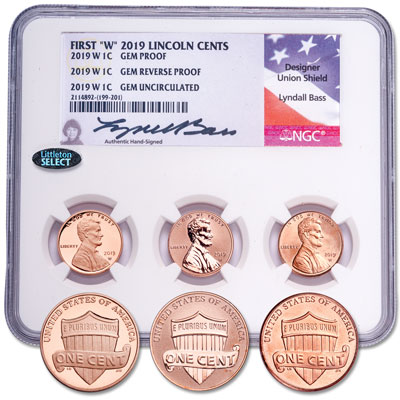
Experienced collectors know coins are minted in a variety of ways. But do you know the differences between the types of coin finishes?
If you find them confusing, you’re not alone. With so many different coin finishes – some of which are quite similar – it’s easy to get them mixed up.
So in this article, we’ll take a closer look at the most common finishes. Plus, a few lesser-known ones that can really stand out in your collection.
Are you ready? Let’s dive right in with…
Circulating Coins
When it comes to coin finishes, the most common by far is that used on circulating coins.
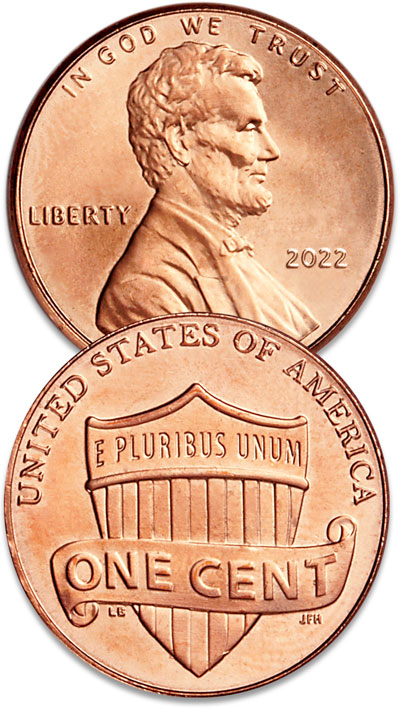
Circulating coins are coins intended for use in commerce. They are struck once, at normal speed, using standard coin blanks and dies. The resulting coin is (usually) serviceable for its purpose, with a lustrous finish that is uniform in appearance.
Of course, once these coins enter circulation, their finish quickly becomes damaged. More and more luster is lost as they pass through many hands, change bags and cash drawers. Especially since most people don’t wear protective gloves when handling their change.
Coins struck for circulation that have never entered circulation – like this lustrous 2022 Lincoln Cent – retain all of their original finish. Mint State coins can still have bag marks and other flaws, so they are graded depending on their condition, from Uncirculated MS-60 to Perfect Uncirculated MS-70.
Simple. Straight forward. Easy to understand, right?
Well, hold on to your hat. Because while such coins are, in fact, Uncirculated, they still have circulating coin finishes. Which are different from Uncirculated coin finishes…
Uncirculated vs. Burnished Uncirculated
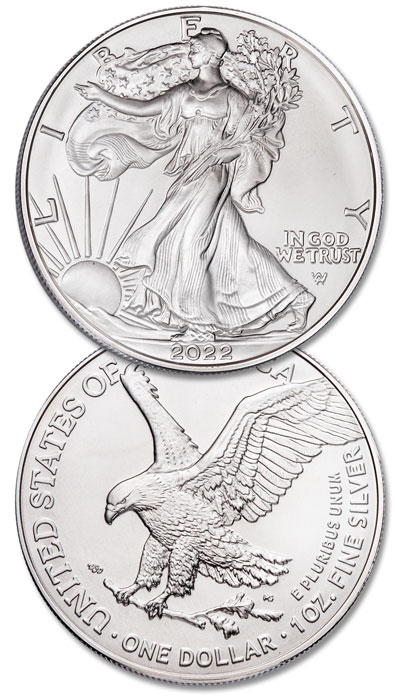
Uncirculated coin finishes can be a bit confusing, especially since Uncirculated is also a classification used when grading coins. But it goes beyond that – because sixteen years ago, the U.S. Mint changed its definition of Uncirculated finish.
Originally, the mint used the term “Uncirculated finish” when referring to the satiny, matte finish found on its bullion coins. Such as the silver and gold American Eagles.
However, in 2006, the U.S. Mint stopped calling this finish Uncirculated. It continued producing bullion coins in the same manner. But it no longer mentioned any particular finish on the coins.
And in a surprise move that still has many scratching their heads, the mint changed its definition of “Uncirculated finish.” Instead of the finish still used on bullion coins today, the mint now uses “Uncirculated finish” to refer to a new finish used on coins struck just for collectors.
And it’s continued to do so ever since.
The minting process for today’s “Uncirculated finish” coins is similar to that used for bullion and circulating coins. But unlike those coins, these collector coins are struck at slower speed using specially burnished planchets, which are hand fed into the coining press.
The result is a soft, matte-like finish that truly complements the coin’s design.
The new collector coins – and their finish – were a hit with collectors. But as can be expected, many found the change in terminology confusing. Especially since both types are usually sold in Uncirculated grades.
So to clarify which coins had which coin finishes, the numismatic community began referring to the new collector coins as “Burnished Uncirculated.” The name caught on, and the mint even changed packaging to include it on labels.
Proof vs. Reverse Proof
One common misconception – especially among collectors new to the hobby – is that Proof is a grade. Or that Proof and Reverse Proof are types of coin finishes.
In fact, both are wrong. Although Proof coins do have their own grades, which are similar to those of Mint State coins.
In numismatic terms, Proof is a method of manufacturing coins. A Proof coin is a special coin struck just for collectors. And the difference is striking – literally.
During the minting process, Proof coins are struck at least twice using highly polished planchets and dies. What’s more, they’re struck at slow speed and under greater force.
It’s a lot of extra work, and as a result, Proofs tend to have mintages far lower than those of regular issue coins. But all that work is well worth the effort.
Proofs boast sharper, frosted design details set against brilliant, mirrorlike surfaces. Each Proof represents the pinnacle of the minter’s art, and is a perfect showcase for the coin’s design. So it’s easy to see why they are highly prized by collectors.
That said, Reverse Proofs are even more special.
Reverse Proofs are similar to Proofs – almost identical, in fact. Except in their case, the design details are mirrorlike and the fields are frosted.
Needless to say, this makes for an eye-catching coin that easily stands out in any collection.
Enhanced Finishes
In addition to the above coin finishes, mints around the world have struck coins with enhanced finishes over the years, either to mark special occasions or to increase collector appeal.
Sometimes, without even telling anyone until after the coins had sold out at the mint!
From 2005-2010, the U.S. Mint used specially burnished planchets and sandblasted dies to strike coins for its official U.S. Mint Sets. The process was discontinued after six years. But the coins created using it feature a beautiful satin-like finish. If you’d like to add them to your collection, Littleton offers a complete set here while supplies last.
And in 2017, the mint released Enhanced Uncirculated Sets to celebrate the 225th anniversary of its founding.
This set contained special versions of the year’s ten regular issue coins, including all five National Park quarters. Each coin features laser-frosted design details set against unpolished fields, creating a uniquely dazzling effect worthy of the occasion.
If you want one but missed the original sale, you may be in luck. You can order this set from Littleton as well – at least, while supplies last.
Another example of the many enhanced coin finishes is the Antiqued finish. Typically used on silver coins, this finish gives a coin the handsome appearance of aged silver. A great example of Antique finish on a coin is the 2022 10 Vatu Triceratops from the island nation of Vanuatu.
There are also gilded finishes, where a coin is enhanced with gold or another precious metal. And finally, the Colorized finish, where coins are colorized to enhance their designs.
How many of these coin finishes
do you have in your collection?
Collecting by finish is another way to add excitement to the hobby. And it’s a great way to give your collection some extra visual appeal.
You’ll find plenty of examples of all these coin finishes in Littleton’s online store, making it the perfect one-stop shop for all your collecting needs. Each coin is carefully graded by our experts. And every purchase is backed by our 45-Day Money Back Guarantee.
Click here to browse our selection.
Happy Collecting!
Sources
Gilkes, Paul, Gibbs, William T. “Burnished versus Uncirculated finish in silver Eagles.” Coin World, December 21, 2016. https://www.coinworld.com/news/precious-metals/burnished-versus-uncirculated-finish-in-silver-eagles.html
Numismatic News Staff. “Few differences in grading proofs.” Numismatic News, November 5, 2016. https://www.numismaticnews.net/collecting-101/differences-grading-proofs
Falk, Connor. “More reverse proofs on the way.” Numismatic News, June 4, 2015. https://www.numismaticnews.net/archive/more-reverse-proofs-on-the-way
Gibbs, William T. “Inside Coin World: 1990s Matte Proof 5-cent coins.” Coin World, May 24, 2019. https://www.coinworld.com/news/us-coins/inside-coin-world-1990s-matte-finish-5-cent-coins.html
Gilkes, Paul. “Coin Values Spotlight: 1990s Matte Finish 5-cent coins.” Coin World, June 10, 2019. US Mint, “U.S. Mint Releases Enhanced Uncirculated Coin Set August 1.” Coin Week, July 28, 2017. https://coinweek.com/us-mint-news/u-s-mint-releases-enhanced-uncirculated-coin-set-august-1/


